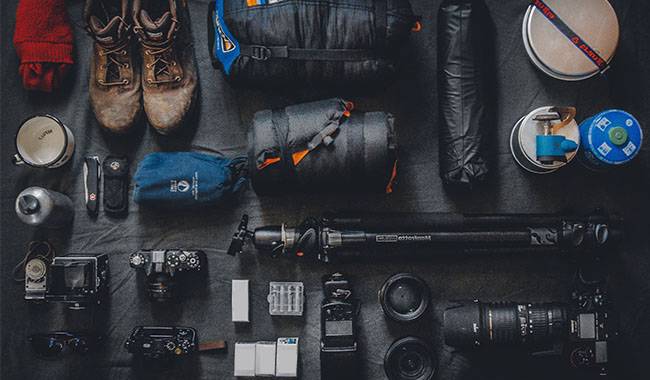
It’s decided! You are about to head to the most beautiful camping spot in the United States. Tickets are bought, routes are drawn up, city accommodations are booked, and you understand, for example, that you want to stay in a national park for overnight camping. What did we learn from the LCN Outdoors article that you need to bring along to prepare for hiking conditions?
I’ll note right away that because we’re talking about camping as it relates to traveling around the United States, this list of things is a little different than a classic hike. Why? Yes, if only because you will be driving to transport from one place to another, which means they may be much more than you have to carry with you yourself. Keep in mind that with 66 lbs (30 kg) behind you, there is no time for romance and scenery.
So, let’s move from words to actions and make a list of the main things you need for camping and hiking (checklist). Plus, I’ll tell you what we took.
The Essentials – Camping and Hiking Checking List
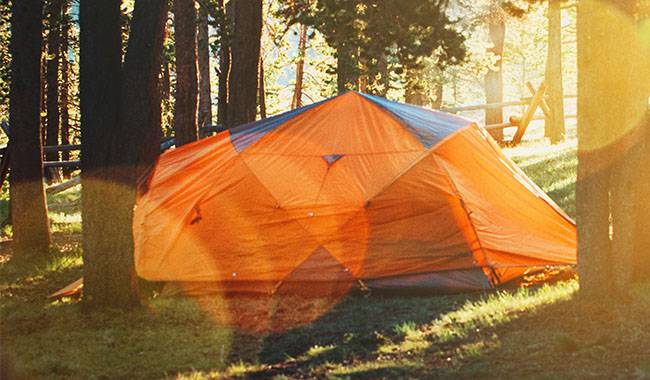
A. Tent
Today, there are so many options for tents that it is sometimes difficult to decide which one you need. In my opinion, the most important thing is that it should be waterproof. It is even better if it is a double-layered tent: mesh + cape. Such a tent allows better ventilation and prevents condensation.
If you plan to carry your gear around in your car and you don’t plan to hike for a long period of time, when you have to take your gear with you, the size doesn’t really matter. In this case, don’t make a big deal out of it and take a bigger tent. Experience has shown that this is more convenient than squeezing into a small one.
For example, we bought an LCN three-person tent before our trip. When we first put it together at home, it looked enormous. I thought everyone at the campground would laugh at us for such a small tent that was so big. As it turns out, people don’t limit themselves at all and put up entire tent palaces. A big tent makes it easier to change clothes, eat breakfast or dinner in bad weather, and be more comfortable.
Our tent didn’t let us down once during the entire two months and was able to withstand both the elements and the wind.
Price of the tent: $50-$100.
Know the equipment: If you buy a new tent, especially if it’s your first, practice putting it together ahead of time so you don’t suffer later in the park and in the dark. For example, I once watched four people with my teammates pack up a freshly unpacked tent for over an hour, even though it only took them 10-15 minutes to do it.
B. Sleeping bags
Sleeping bags are an easier choice than tents. The main thing is not to freeze. As it turns out, in some national parks, it can get very, very cold at night. For example, in Yosemite in July, morning temperatures drop to 32-50 °F (0-5°C). So it’s best to choose your sleeping bag based on the extreme temperature values you expect to encounter.
We bought the simplest sleeping bags from the same LCN company and survived all the American “frosts” with them, although sometimes we slept in pants, wool, and wool socks.
Price of sleeping bags: 30-50 USD (except for the color they do not make any difference).
C. Small rugs
Carpet (some people also call it “foam”) is a necessary and useful thing, because it helps smooth out all the rough pebbles, twigs, and lumps that are recessed into the back, and it’s much warmer to sleep on than without it. If you roll up the top half of it in a roll, then most likely you won’t need a pillow.
We also took the simplest rug.
Carpet price: $10-$20.
D. Headrest/inflatable pillow
Acceptable, unacceptable, it’s up to you. As I wrote above, you can use carpets, for example, instead of pillows, you can use jackets, wool, shirts, and towels.
E. Backpack
If you plan to do small hikes or just walk a lot, you cannot do without a backpack. I’m not talking about carrying a big backpack for everything, they can be in a suitcase with you or something. We’re talking about small backpacks that are easy to carry around on radial outings so that you don’t carry food, water, sunscreen, cameras, etc. when you don’t need them. My teammates and I each had a personal backpack.
This is one set of things that everyone who is going to stay at the campground will definitely need. I will list the same necessary accessories below, but their sets may vary depending on individual wishes and preferences.
Kitchen Utensils and Supplies
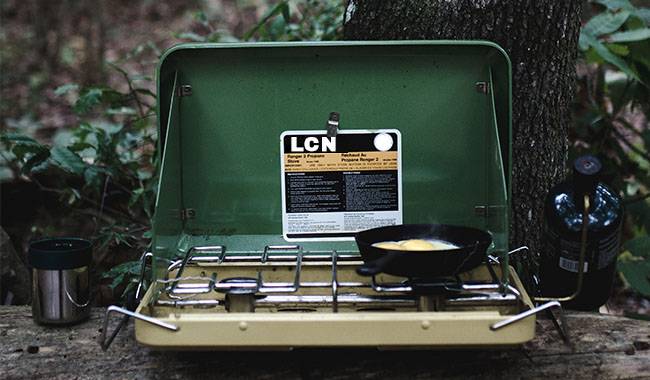
In any case, you must cook. Wasting precious time every time you go out for breakfast and dinner doesn’t seem very convenient to me. A day or two is okay, but if you stay overnight at the campground all the time, it’s more convenient to not rely on cafes and restaurants. So what’s the point of camping? How romantic it is to get up, wash up, have breakfast here, not leave the tent, and then go meet the impressionable people. So, what do you need?
A. Food
Buy in advance and stock up at some supermarkets like Walmart, Auchan, etc. Why? Because the small stores adjacent to national parks are unlikely to offer the best prices. Almost all of them make their living as tourists and take full advantage of it.
B. Water
Water should always be in stock, and you can never have too much of it. We used both water we picked up in the park (it was clean and good for drinking and cooking) and bottled water. You can use special cleaners if you’re worried about water in the park, but I think in this case it’s easier to buy water at the store. We used to carry a large spare can and keep buying a few packs of small 500ml bottles (they are easy to use and you can always keep them in a small backpack).
C. Cooker or gas stove
Do you plan to cook your own food? You will have to buy a compact gas stove or burner. Yes, all organized campgrounds have a place to build a fire and a grill to cook on, but building a fire every time you just want to boil water or quickly cook pasta is inconvenient, to say the least.
We bought a gas burner, or more specifically two. At first, we bought a small one, but it proved to be not the most convenient because the flame was “right on target”, a small spot in the center of the pot that did not heat the bottom evenly. Then we bought a large burner, which turned out to be too big for our pan, and we never found our ideal choice.
For the burner, you will need gas cylinders containing a mixture of butane and propane. Best to buy them immediately as in some places they are not found in stores. Buy mainly from Walmart.
Prices: $5-$15 for small burners, $10-$25 for large burners, $5-$8 for small gas cylinders, and $10-$15 for large.
There are also entire portable stoves powered by pure propane tanks. They’re not particularly expensive, and we’ve seen a lot of people using them. Cylinders of pure propane are much more common, by the way.
Tip: In campgrounds, you can’t collect firewood to make a fire, you can only use purchased ones (unless the rules say otherwise). Why? Because the “wasted” wood is nutrients for other plants. So you will have to spend money on firewood. Some logs cost between -$10.
D. Camping cookware
Definitely need pots and pans (or at least one), otherwise how can you cook? We have the stylish and expensive titanium pots from LCN. If we hadn’t damaged one of the boats and didn’t have to buy a replacement, we would never have known what they cost. By the way, we destroyed it with an uncomfortable little burner that “hit the mark”. This stove managed to destroy the titanium pot!
So, we have a small 500 ml pot for boiling water for tea and coffee, and a large 1000 ml pot for preparing soups, side dishes, etc. By the way, this size is more than enough. In addition, the lid of the large pot can be used as a frying pan.
LCN cookware is of excellent quality, lightweight, compact and convenient. The only drawback is the price. I think once you can buy something simpler.
Cookware prices: Depending on the size, usually ranging from $20-$50.
E. Dishes
There are no mandatory dishes, everything is up to you. At the very least, cups, plates, spoons, forks and knives will come in handy. Containers may be useful, especially if you’re taking food with you on a hike. Trust me, it’s great to sit down and eat somewhere in the middle of the park in the middle of nature. You can easily find inexpensive plastic utensils at any Walmart.
F. Biodegradable Soap
Great for washing dishes so you don’t harm nature with all the less useful ingredients contained in regular detergents. You can also buy camping supplies for $5-$10 at Walmart superstores in that department, I think.
Navigation
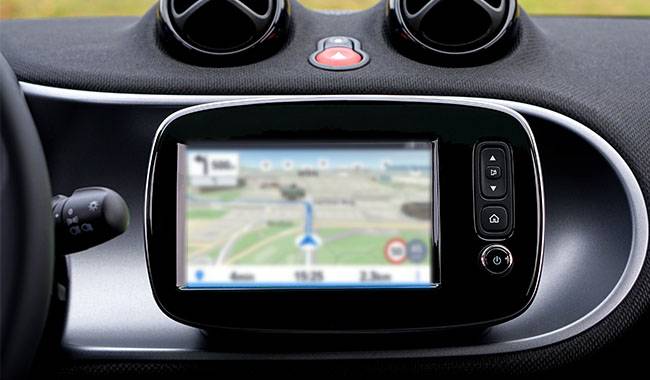
Navigation issues are important, but mostly when going from city to city and through populated areas. In the parks, generally, no problem; it’s hard to get lost because there are plenty of signs, diagrams and other aids everywhere. In any case, there is nothing wrong with the following things.
A. Maps
Paper maps with states and cities are great. Unlike GPS, they give you a big picture. When you’re looking at a big map in half a car, everything, strange as it may seem, becomes clear all at once. Plus, they tend to have almost all the campgrounds marked. We’ve used them many, many times on our trips.
You can buy such cards at gas stations in the US or at any National Park Visitor Center, for example. You can order them in advance on the following website ebay.com
B. GPS and car navigator
A GPS is a faithful assistant on any journey. We’ve been using a generic brand of navigator for a year now and we don’t know how to navigate to our destination without it. Thanks to this faithful friend, we can go anywhere without fear of getting lost. We use it to walk.
For a comfortable car ride, it is better to have a car navigator with a big screen, otherwise it will be difficult to drive in a foreign country. If you rent a car from a car rental company, then the navigator will most likely be attached to the car.
C. Compass
We don’t think a compass is unnecessary, but if you are climbing a long distance and are not equipped with a navigator, take it with you. Will it come in handy? (For example, there are not that many trees in Death Valley, especially mosses, by which you can determine the base point))
D. Guidance
A guide is a good and useful thing not only when preparing for a trip, but also during the trip. You can always check technical information: how to get there, working schedule, where to spend the night, etc. As always, one of the best guides is Lonely Planet.
First Aid Facilities
A. First aid kit
You don’t have to carry a full medical kit, including sleeping pills and anti-seasickness medication, but hydrogen peroxide, bandages and something for painkillers in the bottom of a small backpack is always a better bet. You never know.” Fall down, wake up, cast…”
Band-Aids are also a good idea, especially if you bought new sandals or trainers before your trip.
A first aid kit is probably a good idea, but it doesn’t hurt to buy travel insurance before you travel, just in case. Medications and medical care in the United States are very expensive, so it’s a good idea to save a few dollars.
Protective Equipment
A. Sunscreen/spray
We used Banana Boat cream, brought it back from Mexico, and then bought the same spray in the US for $10. Incidentally, it provides good protection from the sun and is comfortable to use.
B. Mosquito and other mosquito repellents
Mosquitoes hardly bothered us with a few exceptions. We only used the spray a few times.
C. Sunglasses
Even if you don’t like this accessory, it’s best to wear them because glasses not only protect your eyes from the sun, but also from dust. You can buy disassembled glasses at any supermarket for $10-20.
D. Lip balm
Even teammates use my lip balm because when you walk around in the sun all day, your lips burn just like your skin does when it’s unprotected. It’s a nasty feeling!
E. Hat/panama/bandana
If you don’t have a hat, it’s best not to go to the park at all. It’s easy to get heatstroke! I should point out that some of the park souvenir stores sell the cutest hats (about $20-$50). I bought one at the visitor center.
Other Useful Items
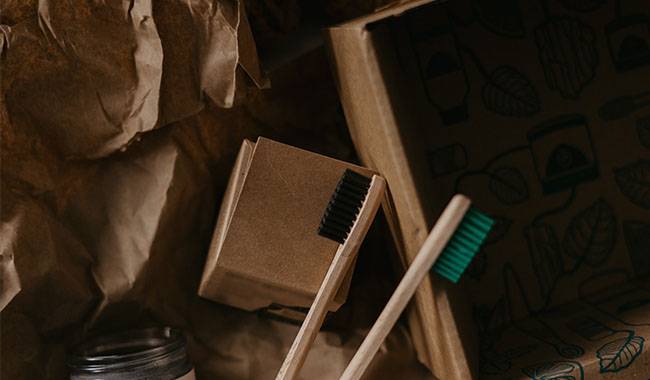
- personal items (everyone can work this out for themselves, just like clothes) – most importantly, don’t forget warm clothing: if possible, bring not only a sweatshirt/wool sweater but also a thin jacket. Warm socks are also useful. Mornings and evenings can be very cold (Yosemite, Bryce Canyon, Sequoia).
- towel
- toothbrush and toothpaste
- toilet paper
- personal hygiene products – various wet wipes and antibacterial lotions are handy because, first, not all campgrounds have water and, second, they are handy to use during the camping itself.
- flashlight or not – we use the headband type – it is very handy, especially when we have to pack the tent in the dark. In principle, any cheap Chinese product will do; we’ve had one of these for years.
- spare batteries and various rechargeable batteries
- Cans/Bear Canisters – What is it and why do you need it? This item could come in handy in a park where there are bears trying to eat your food. Generally, in such parks, each tent site has a special tin box in which all food and all smelly things must be locked (more details here). That’s why, in fact, the tin was never used for us (we just used it as a container for various small things).
If you are going to spend the night in a “bear danger” park instead of a campground, it is important to bring such a container, that is, no special box. In this case, it’s best to hide all the stinkiest stuff in a jar and take it away from the overnight stay. If you believe the manufacturer and advertising, then the bear will not be able to overcome such a can and everything will be safe and sound.
Price of the can: 50-100 USD. - Food containers – Once they thought about how to organize food in the trunk, there is no better way than to buy a foam container at the supermarket. It turned out to be very convenient.
Container price: $5-10 USD. - Whistle – I would also put a whistle here, and usually highly recommend that you carry it with you to scare away various animals. I wonder if it would help? Do you think grizzly bears would be scared if you whistled at them?
Where Can I Buy Something for Camping and Hiking?
There are a million options to buy from online stores.
For example, you can check the range and prices here and you will find a lot of useful information.
www.ebay.com
www.amazon.com
www.bubgo.com
Perhaps, that’s all. I hope I haven’t forgotten anything important. If I’ve missed anything, please add it to the list in the comments.